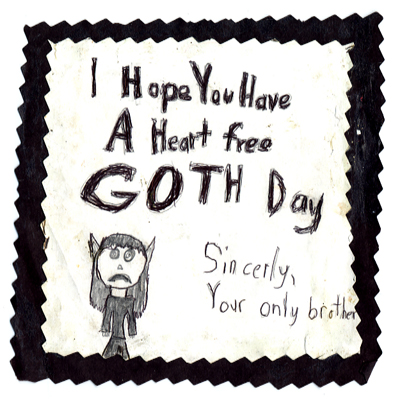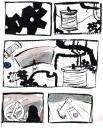 Cults and Cosmic Consciousness:
Cults and Cosmic Consciousness:
Religious Vision in the American 1960s
One of my favorite writers on one of my favorite fascinations. More than just an overview of the various cults and fringe religious/spiritual movements America has seen since the 60s, Paglia argues that Western rationalism’s insistence on ignoring “Dionysus” (religion, spirituality, nature) has left a huge void in our culture and psyche. Thus, until our intellectual and artistic leaders acknowledge and embrace humanity’s need for ritual and mystery, cults and other dubious institutions will thrive. But don’t take my weak summary as a substitute for the essay. It’s long but oh so worth it, if only because Paglia is such a damn good writer.
Hence the religious dissidence and secessionist tendencies of the 1960s were simply a new version of a long American tradition. The decade’s politics loom large partly because demonstrations, unlike inner journeys, were photographable and indeed often staged for the camera. Today’s young people learn about the sixties through a welter of video clips of JFK’s limousine in Dallas, Vietnamese firefights, and hippies draped in buckskin and love beads. Furthermore, the most fervent of the decade’s spiritual questers followed Timothy Leary’s advice to “Turn on, tune in, and drop out” and removed themselves from career tracks and institutions, which they felt were too corrupt to reform. The testimony of those radical explorers of inner space has largely been lost: they ruined their minds and bodies by overrelying on drugs as a shortcut to religious illumination.
The absence of those sixties seekers from the arena of general cultural criticism can be seen in the series of unresolved controversies in the last two decades over the issue of blasphemy in art. With the triumph of avant-garde modernism by the mid-twentieth century, few ambitious young artists would dare to show religious work. Though museum collections are rich with religious masterpieces from the Middle Ages through the nineteenth century, major American museums and urban art galleries ignore contemporary religious art-thus ensuring, thanks to the absence of strong practitioners, that it remains at the level of kitsch. And the art world itself has suffered: with deeper themes excised, it slid into a shallow, jokey postmodernism that reduced art to ideology and treated art works as vehicles of approved social messages.
The article is not without its flaws of course. Burningman is a glaring omission; a massive celebration of nature, sex, and art that is known for its participation by many really smart people (like the founders of google) in addition to the usual new-age types. And her solution, that universities should make the core of their education comparative religion and culture, seems a bit backwards and Apolloesque. Myths are passed down through storytelling and ritual; the classroom strikes me as an impotent setting for the cultural change Paglia calls for. I want tangible ways to channel Dionysus; active artists, thinkers, and activities to re-inject myth/spirituality/whatever-you-want-to-call-it into our culture. Some people/things who have done that for me in some way already:
- Francesca Lia Block (author- fairy tales, paganism, magic)
- David Lynch (filmmaker- transcendental meditation, iconic bizarreness, dreams)
- Brian Jonestown Massacre (band- psychedelia)
- Clifford Pickover (author- pop writing on the intersections and wonders of science, religion, consciousness, and art)
- Rick Strassman & Alexander Shulgin (researchers- psychedelic drugs)
- Pedro Almodovar (filmmaker- femininity, sexuality, myth, beauty, religion, sensuality)
- Neal Stephenson (author- east/west dichotomy, collective unconsciousness, past & future, relationship between art & technology)
Who/what is on your list?






